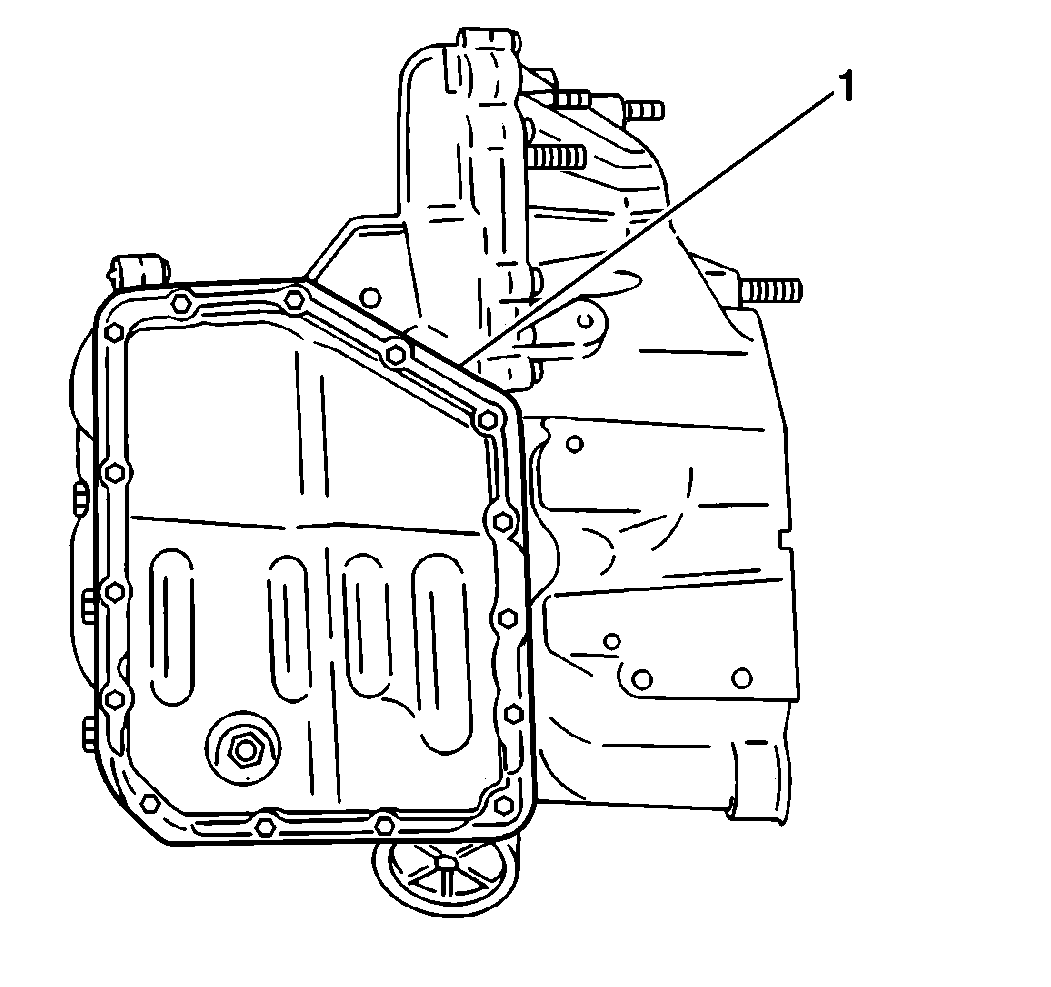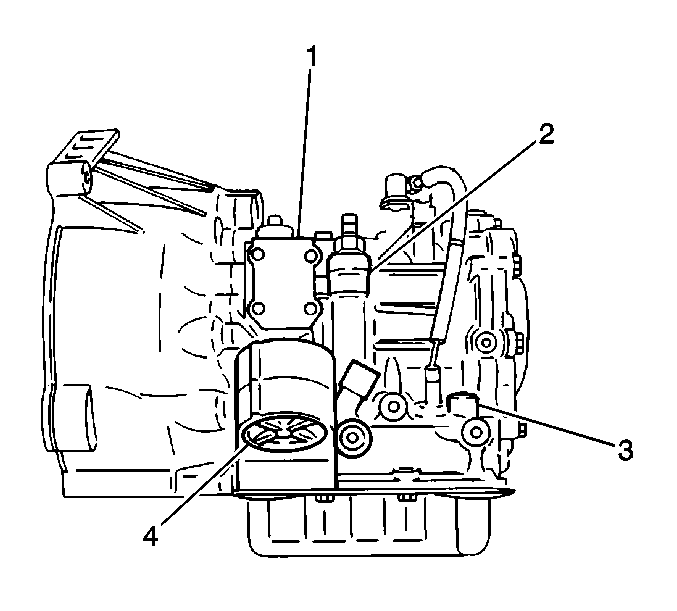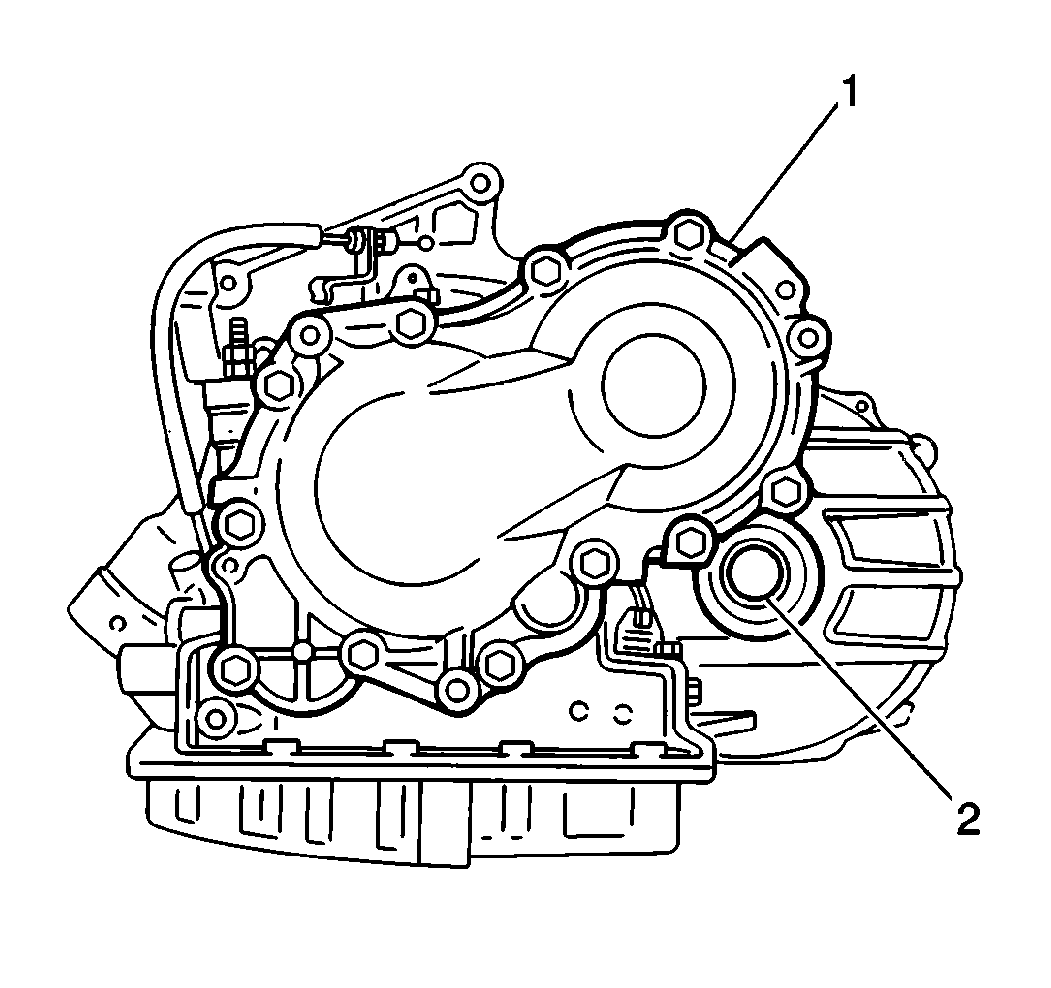Once the leak has been pinpointed and traced back to its
source, the cause of the leak must be determined for the leak to be properly
repaired. For example, if a gasket is replaced but the sealing flange is
bent, the new gasket will not repair the leak. The bent flange must also
be repaired. Before attempting to repair a leak, certain conditions should
be checked and corrected if necessary. The following conditions may cause
a leak:
Gasket Leakage
| • | Fluid level/pressure is too high |
| • | Plugged vent or drain-back holes |
| • | Improperly torqued fasteners, dirty or damaged threads |
| • | Warped flanges or sealing surfaces |
| • | Scratches, burrs or other damage to the sealing surfaces |
| • | Cracking or porosity of the component |
| • | Improper sealant used, where applicable |
Seal Leakage
| • | Fluid level/pressure is too high |
| • | Plugged vent or drain-back holes |
| • | Cracks in the component |
| • | Scratched, nicked or damaged, manual or output shaft surfaces |
| • | Loose or worn bearing causing excess seal wear |
Possible Points of Fluid Leaks
Transaxle Fluid Pan Leakage
| • |

Test for incorrectly tightened
attaching bolts. |
| • | Test for an improperly installed or damaged gasket. |
| • | Test for a damaged fluid pan. |
| • | Test for an incorrect gasket (1). |
Vent Leakage
| • | Test the fluid level indicator for the overfilled system. |
| • | Test the fluid color for the water or the coolant in fluid. The
fluid will appear milky. |
| • | Test for an incorrect fluid level indicator. |
| • | Test for a plugged or restricted vent. |
| • | Test for a plugged or restricted drain-back holes. |
| • | Test for a mispositioned fluid pump-to-case gasket. |
| • | Test for porous casting. |
Case Leakage
| • |

Test for a damaged or
missing filler tube O-ring (3). |
| • | Test for an incorrectly installed or missing filler tube bracket. |
| • | Test for a missing, damaged or improperly installed TV cable seal. |
| • | Test for a damaged or loose Vehicle Speed Sensor (VSS) seal. |
| • | Test for loose or damaged fluid cooler connector fittings. |
| • | Test for a damaged speedometer driven gear seal. |
| • | Test for manual shift shaft fluid seal (2). |
| • |

Test for a damaged, missing
or improperly installed rear cover gasket (1). |
| • | Test for a damaged or missing intermediate servo cover gasket. |
| • | Test for a damaged or missing intermediate servo cover seal. |
| • | Test for a damaged, missing or improperly installed transaxle
case housing-to-case gasket. |
| • | Test for worn or damaged drive shaft seals. |
| • | Test for porous casting. |
Converter Side Leakage
| • | Converter seal damaged. |
| - | Seal lip cut (Test converter hub for damage) |
| - | Garter spring missing from the seal |
| • | Converter leak in the weld area (replace the torque converter). |
| • | Porous casting (case or pump). |
Fluid Out the Vent or Filler Tube
| • | Water or coolant in the fluid (the fluid will appear milky) |
| • | Incorrect fluid level indicator |
| • | Drain-back holes plugged |



